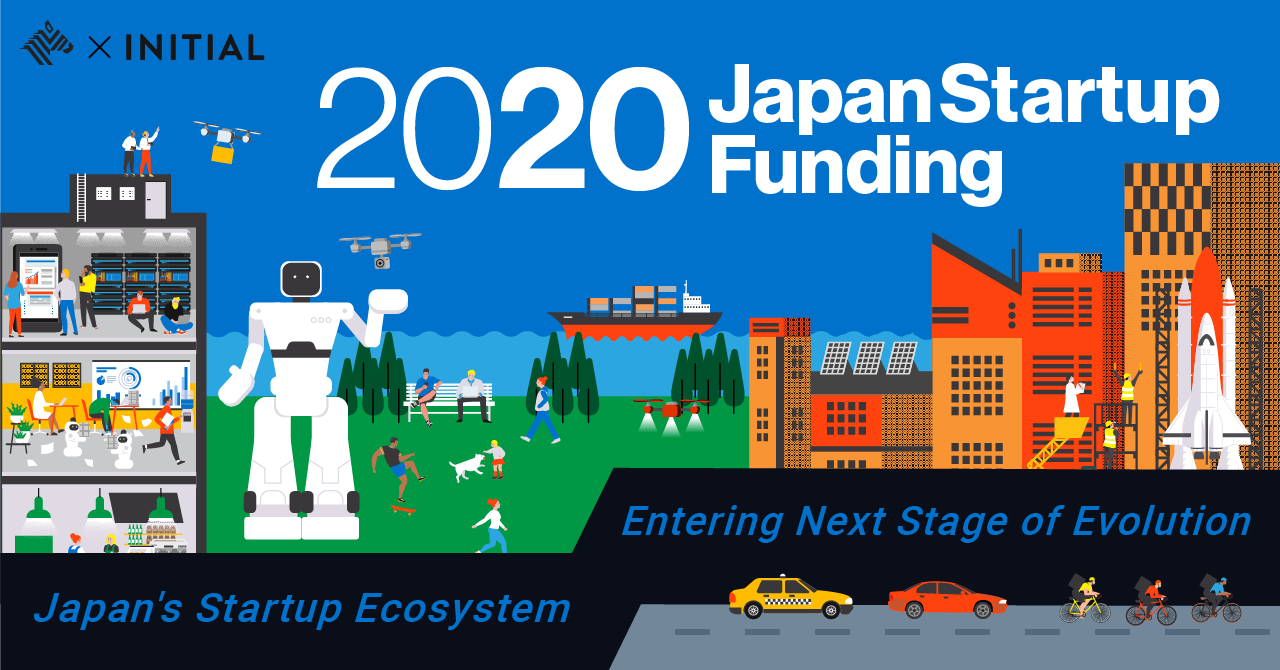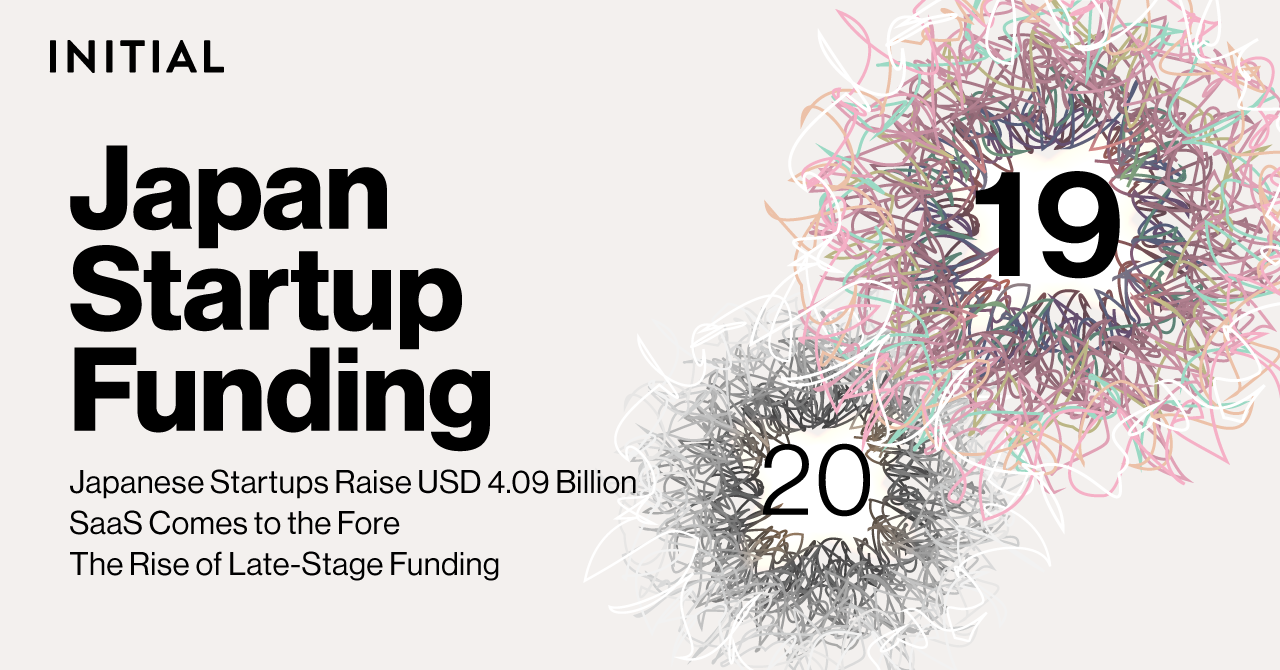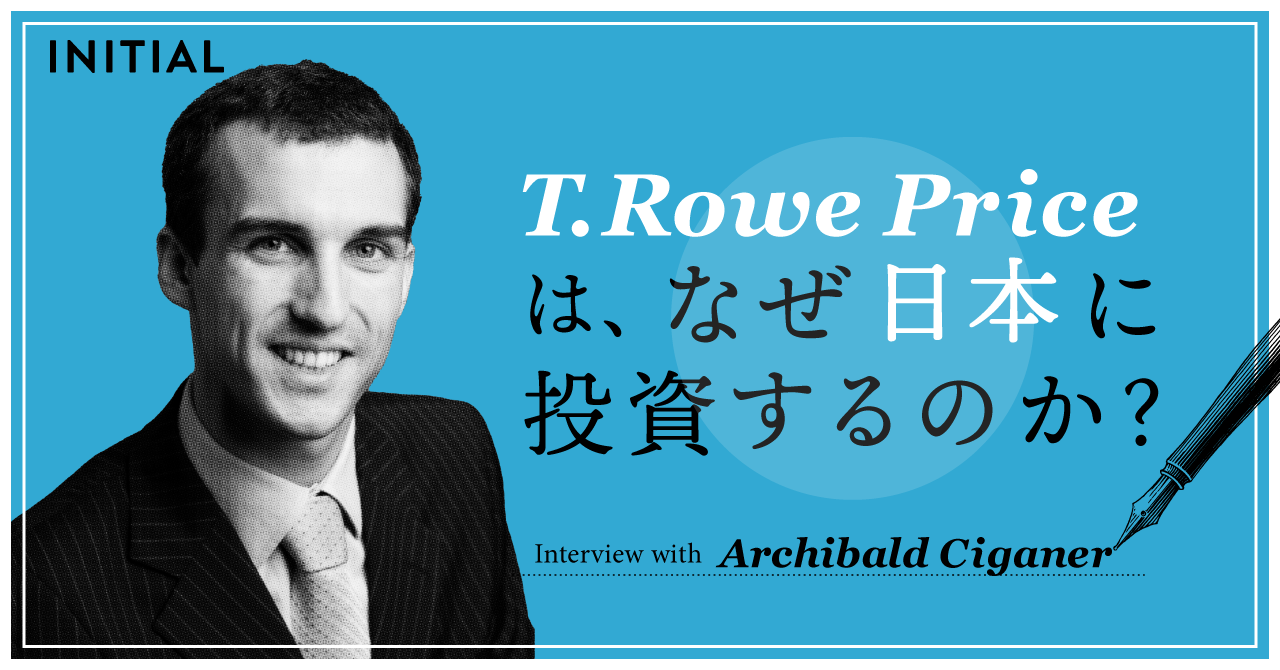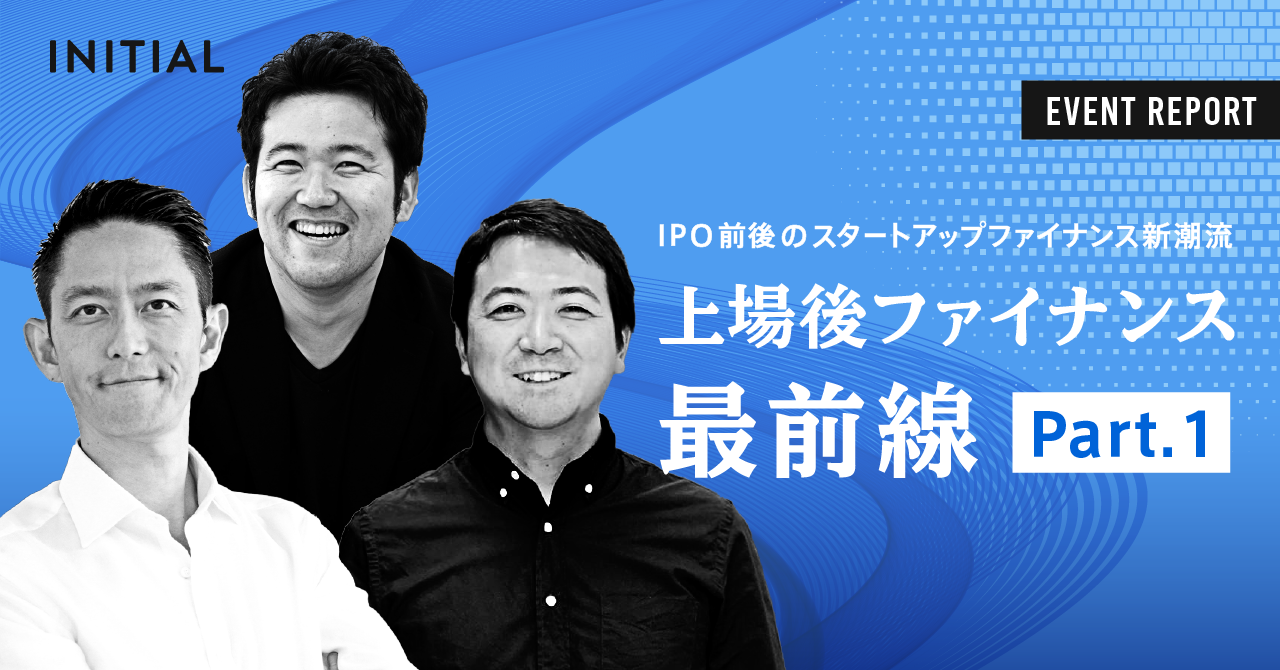“Japan Startup Funding” is a report detailing funding trends among Japanese startups that is independently researched and released on a biannual basis by INITIAL, one of Japan’s leading startup information platforms.
This is an English translation of the summary report prepared in collaboration with NewsPicks’ editorial department in advance of the release of INITIAL’s full mid-term report for the first half of 2021 (full report available in Japanese only).
Record High Funding in H1
Despite the continued economic impact of the COVID-19 pandemic, Japanese startups have been steadily raising funds. Over the first half (H1) of 2021, Japanese startups raised approximately JPY 324.5 billion (USD 3.01 billion) in investments, which, to put into context, is nearly as much as in the whole of 2017 (please note that the conversion from JPY to USD throughout this report is based on the average mid-market exchange rate for each corresponding year).
The key trends in Japan’s startup scene, namely the continued decline in the number of startups receiving funding and the growing value per deal, have changed little over the last three years. The continuing growth in the total startup investment amount can thus be attributed to the growth in deal size, rather than the number of startups attracting investments.

A half-year comparison of funding raised by Japanese startups since 2016 reveals that H1 2021 saw the largest amount of funding raised of any half-year period over the last five years.

Focus Back on Growth
One way to gain insight into how the purpose of startup fundraising changes is to examine the number of days it takes to complete a funding round.
The conventional way for a startup to procure funding is to present the future growth potential of their business to investors, who then evaluate the proposal and decide whether to invest or not. If successful, the startup then uses these newly-gained funds to drive the growth of its business and further increase its valuation in order to move on to the next round of fundraising.
If, however, a startup's valuation does not increase after this investment, it remains in the same round of funding (Series), which takes longer to complete. In this way, the aforementioned trend towards fundraising for the purpose of securing cash reserves, rather than to drive the growth of the business so that its value increases in the eyes of investors, makes startups stay at the current round longer without moving on to the next one.
INITIAL has statistically analyzed funding rounds carried out since 2016 in order to create uniform definitions for each round. Based on this analysis, the definition for advancing from a Series A funding round to a Series B funding round (the same definition applies for all subsequent rounds as well) is that there must have been an increase of at least 20% from a company’s post-money valuation following the previous round to its pre-money valuation for the current round. INITIAL definitions can be found at https://initial.inc/articles/7oUK5qkbYvX4tLeU0VMnwM (currently available in Japanese only).
In the chart below, we take a look at the number of days from the beginning of each funding round to its conclusion. For example, if the only capital increase in the Series A funding round of a company is the funding raised on February 1, then the number of days between the start and end of this Series A funding round is counted as 0.
However, let’s say the same company also raised funding on May 1. If the company’s valuation has not increased by at least 20% between February 1 and May 1, then this second capital increase is also regarded as part of its Series A funding round.
In other words, there are two occasions of capital increases that fall under its Series A, and the duration of this round is thus counted as 89 days.

The above chart clearly shows that Series A through C were significantly longer in 2020, before essentially returning to former levels in H1 2021.
For example, the duration of a Series A funding round jumped from around 1 day in 2019 to 2.5 months in 2020, before falling back to 0 days during H1 2021 (as of the stated date of calculation by INITIAL; may rise marginally in the future following the release of further data).
The shorter duration of funding rounds in H1 2021 indicates a return to more conventional fundraising aimed at acquiring capital to drive business growth, following the temporary shift to fundraising in order to secure emergency cash reserves in 2020.
Number of Down Rounds in Decline
Given the increase in the number of companies that were unable to exhibit 20% growth in post-money valuation in 2020, there have been concerns that more Japanese startups are now struggling to drive solid growth.
In order to examine this concern, this section looks at the number of down rounds, a scenario in which a company's valuation is lower than it was during its previous funding round.
While the number of down rounds did jump to 27 in H1 2020, it has since fallen back in H2 2020 and H1 2021, which is also consistent with the aforementioned shift back to fundraising for growth capital.

However, even the jump in H1 2020 should not be viewed in an overly negative manner: although this was the highest number of down rounds recorded, they still only accounted for 3% of the total number of funding rounds (from Series A onwards).
Later Stage Rounds Growing in Size
The fact that startups took longer to complete funding rounds in 2020 was not necessarily only down to the impact of COVID-19.
In general, more mature startups tend to attract more capital and investors. As a result, later-stage funding rounds are often broken up into multiple stages and, thus, may take longer to complete.
In addition, the more overseas corporations and general business corporations there are among shareholders, the longer proceedings tend to take. Conversely, funding rounds for startups in the early stages of growth are generally shorter.
For 2020, it is thus necessary to consider the possibility that the amount of funding raised during each funding round may have actually increased.
In order to examine this possibility, the below chart illustrates the median deal value in each funding round.
The data clearly shows that the median deal value in Series A and B funding rounds was either flat or even declined YoY in 2020. In other words, it is likely that a considerable number of Series A and B rounds in 2020 were for the purpose of procuring emergency cash reserves after all.

In 2021, meanwhile, the size of Series C and D—in other words, later—funding rounds visibly increased, and their contribution boosted the total deal value to the overall favorable levels seen during the first half of the year.
This is likely to be the reason why, as shown in the ”Duration of Each Funding Rounds (Median)” diagram earlier, the duration of Series C rounds has remained higher than in 2020, despite falling back, to some extent, in H1 2021 compared to the spike in 2020.
New Faces Appear in Top 20
Among the 20 largest Japanese startup funding deals in H1 2021 (see diagram below), the Series D of SmartHR, a provider of cloud HR software, topped the list with JPY 15.6 billion (USD 145.31 million).
SmartHR previously raised JPY 6.15 billion (USD 56.4 million) in its Series C round at the end of August 2019. About a year and a half later in H1 2021, the company moved on to its next funding round, achieving a post-money valuation of JPY 173.18 billion (USD 1.61 billion), nearly six times higher than the previous round, and becoming a unicorn.
The below ranking corresponds to investment deals involving increases in capital and investments from startup funds. Refer to the notes at the bottom of the diagram for details.

SaaS companies such as SmartHR have consistently ranked in the top 20, driven in part by the significant decrease in face-to-face social interaction due to COVID-19.
However, there were also a few changes in the lineup in H1 2021. While online tools to boost business efficiency continue to feature prominently, companies such as Ubitus, which provides technology for distributing and sharing digital content such as videos and games, also ranked high in H1 2021.
Looking at other entries, FinTech, an area that has attracted investment for some time now, saw a concentration of funding in payment processing startups.
Other notable entries include food delivery and takeout app menu, which made the list for the first time through its Series A on the back of its capital and business alliance with Japanese telecoms giant KDDI.
While menu is the only startup in the category of food delivery services to make the list in H1 2021, the growing demand for takeout during COVID-19 has led to an influx of new market entrants, including both established and emerging domestic and international players.
There were also several startups in the top 20 operating in the R&D domain, which has for a long time struggled to attract funding. One such company was Atonarp, which offers digital diagnostics solutions in the healthcare field and molecular analysis solutions in the pharmaceutical and semiconductor fields.
In 2015, Atonarp established subsidiaries in India and Silicon Valley, which suggests that the company has expanded its network of connections to include shareholders overseas.
Overseas Investors Take More Interest in Japanese Startups
Another noteworthy trend in H1 2021 was the active involvement of overseas investors.
Of the 8 startups in the top 10 that have disclosed details on the investors in their funding rounds in H1 via press releases, 5 received funding from foreign investors.
These investors are based not only in the US but also in other regions such as Hong Kong and South Korea. They also vary in terms of their types, as well as their track records when it comes to investing in Japanese startups.
For example, US private equity fund KKR, US quantitative trading firm Susquehanna International Group, and Pavilion, a private equity fund under Singapore state investment firm Temasek Holdings, have all previously invested in Japanese startups.
On the other hand, Celesta Capital (formerly WRVI Capital), a US-based global venture capital firm, and Wellington Management, a US investment management firm, appear to have made their first-ever investments in Japanese startups in H1 2021.

As described in previous (2019, 2020) reports by INITIAL, foreign investors had already been making considerable investments in Japanese startups for some time. What is particularly notable in H1 2021 is that many of them were cross-border investors with a lasting interest, intending to continue holding their shares even after an IPO.
On the Tokyo Stock Exchange's Mothers market for emerging companies, which involves many retail investors, any attempts to raise capital after an IPO are frowned upon as they result in a dilution of earnings per share, and can often lead to a sharp drop in share price. As a result, companies are naturally reluctant to raise additional post-IPO capital in order to avoid such share price drops— an issue that has been well documented in Japan.
It is therefore becoming standard practice for later-stage startups to first raise funds from crossover foreign investors, who are willing to hold on to their shares over a longer term, before they go public, or to make a global share offering at the time of their IPO.
Meanwhile, with the exception of KDDI, there were no notable examples of large-scale investments in leading startups by general business corporations in H1 2021.
General business corporations such as telecoms and trading companies, which have invested heavily in startups in the past, are continuing to invest, but the scale of such investments is shrinking. This could be an indication of a shift in their focus to early-stage investments.
Two Startup IPOs Valued at Over USD 1 Billion
In this section, we will take a look at IPOs during the first half of 2021.
The number of Japanese startups listed during this period was 28, with a median market capitalization at the time of IPO of JPY 15.0 billion (USD 139.28 million) (as per INITIAL research).
This is lower than the median market capitalization of JPY 17.3 billion (USD 160.64 million) for new listings on the TSE Mothers (as per KPMG, “IPO Trends in H1 2021”).
Nevertheless, there were two large-scale IPOs that resulted in a market capitalization of more than USD 1 billion, as can be seen in the below diagram listing the largest startup IPOs in H1 2021.
The largest IPO in H1 2021 was that of Visional, which operates a number of job-related services including the popular recruitment platform "BizReach". Visional’s IPO came just one year and two months after the company’s establishment in February 2020, which was the result of its predecessor Bizreach’s transition to a group management structure. Bizreach itself was established in August 2007, around the same time as cloud-based contact information management tool provider Sansan, mobile game developer gumi, and payment service provider Metaps.
BizReach successfully monetized its business at an early stage and raised a total of JPY 4.1 billion (USD 36.55 million) in the private market in two funding rounds in 2010 and 2016. Interestingly, this amount is relatively small when compared to the company’s market cap at the time of IPO.

Appier Group, which had the second largest IPO in H1 2021, is a rather unusual startup originating in Taiwan that develops AI-driven SaaS solutions for marketing on a global scale. Prior to the IPO, the company raised funding in the private market from investors that included Sequoia Capital India, JAFCO Group, LINE, Softbank Group, and NAVER.
Japan only started regularly producing IPOs at the JPY 100 billion scale relatively recently, in 2018. As more diverse investors participate in funding rounds and unlisted later-stage startups gain more opportunities to raise capital, the business scale of startups in Japan is likely to continue growing, which will in turn result in more large-scale IPOs.
While it has often been pointed out in the past that there is a dearth of Japanese startups with the actual ability to compete on the world stage, the continuing globalization of funding sources appears to be finally driving the emergence of globally competitive Japanese startups.
Increasing Focus on R&D and Regional Investment
This final section takes a look at the establishment of startup-focused funds in Japan.
Close to 50 funds are expected to be established throughout the whole of 2021 (as of this report’s writing in July 2021), primarily by investors with a proven track record.
As of the stated date of INITIAL’s calculation (28 July 2021), 13 funds of JPY 10 billion or more had been established, a continuation of the trend towards larger-scale funds (median fund size in 2020 was JPY 2.8 billion; data as of 25 January 2021).
As a consequence, more funds are focusing on mid- and later-stage startups. This same trend can be observed not only among independent VC funds but also in the funds established by general business corporations and financial institutions.
The appearance of larger-sized university funds was another notable development in H1 2021. Examples include Osaka University's “OUVC Fund 1”, the University of Tokyo's “UTEC No. 5 Fund”, and Kyoto University's “KYOTO-iCAP 2nd Fund”, all of which are in excess of JPY 10 billion.
While university funds are generally expected to invest in the R&D domain, general business corporation funds are also beginning to invest in this area. For example, the “Medical Development Support No. 1 Fund” established in H1 is a large-scale fund that focuses on investment in the biotechnology and healthcare fields.
In addition to the R&D-focused funds, another new trend seen in H1 was the apparent rise of regional funds such as the “Hyogo Kobe Startup Fund”. This trend is not limited to the establishment of funds: for instance, Softbank also announced that it has acquired the rights to operate “Station Ai”, a planned global innovation center for the creation, development, and deployment of startups that will be located in Aichi Prefecture. The company intends to spend around JPY 14.3 billion (USD 127.46 million) to construct Station Ai, which is scheduled to open in 2024.
While Japan’s startup market had, until last year, primarily seen new developments in the SaaS domain involving global investors, the above findings would suggest that developments in the R&D domain and in regional areas could attract an increasing amount of attention going forward.
It will also be of interest to see whether or not new developments also emerge in relation to the global expansion of Japanese startups involving international investors.
This Report’s Scope This report is a summary of INITIAL’s full "Japan Startup Funding 2021: Mid-Term Report", a more comprehensive report on Japanese startup funding information, which will be released on INITIAL in the near future (currently in Japanese only).
INITIAL’s Definition of “Startups”
• Private companies in Japan (including domestic companies started by foreigners and overseas companies started by Japanese nationals).
• Companies that possess unique technologies, products/services, or business models, and are investing in the growth and expansion of their own business.
• Companies that are challenging the existing way of life in an attempt to bring about a new change, be it in terms of general lifestyle, society, economic models, or technology.
• Other companies that INITIAL determined to be eligible.
Definition of “Funding”
• Any increases in capital stock, including investment received at the time of company establishment, contribution for third-party allotment of shares, rights offering to shareholders, exercise of rights such as stock acquisition rights, public offering (excluding public offering via an IPO), issuance of convertible notes, or issuance of convertible equity.
• ICOs are not included in the calculation as this method does not increase capital stock under the current accounting standards.
• Does not include increase in cash due to acquisition, conversion into a subsidiary, or transfer of shares.
• Since this survey focuses on startup funding, it excludes the cases when investment in startups is made by transferring shares held by VCs or acquisition/conversion to subsidiaries of companies, although those are sometimes included into the field of startup investment.
• There are differences between the content of investment value and the fundraising deal value and, thus, they are not equal.
Author: Atsuko Mori
Editors: Mitsufumi Ikeda, Naoko Hamada
Research: Takeshi Fukui, Kana Akashi, Ryo Hirakawa, Naoko Hamada, Lisa Fujino
Design: Eri Ishimaru, Harumi Asano
English Version: Luke O’Donovan, Victor Makhnutin






